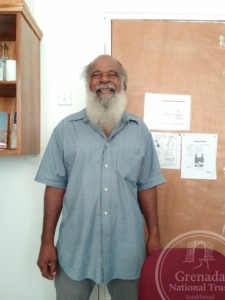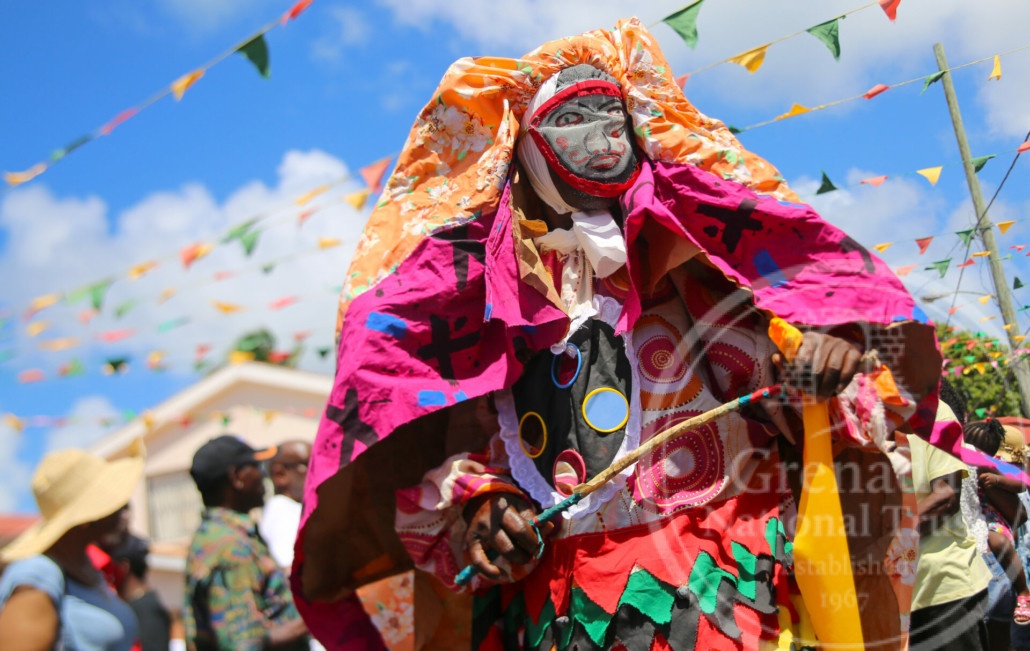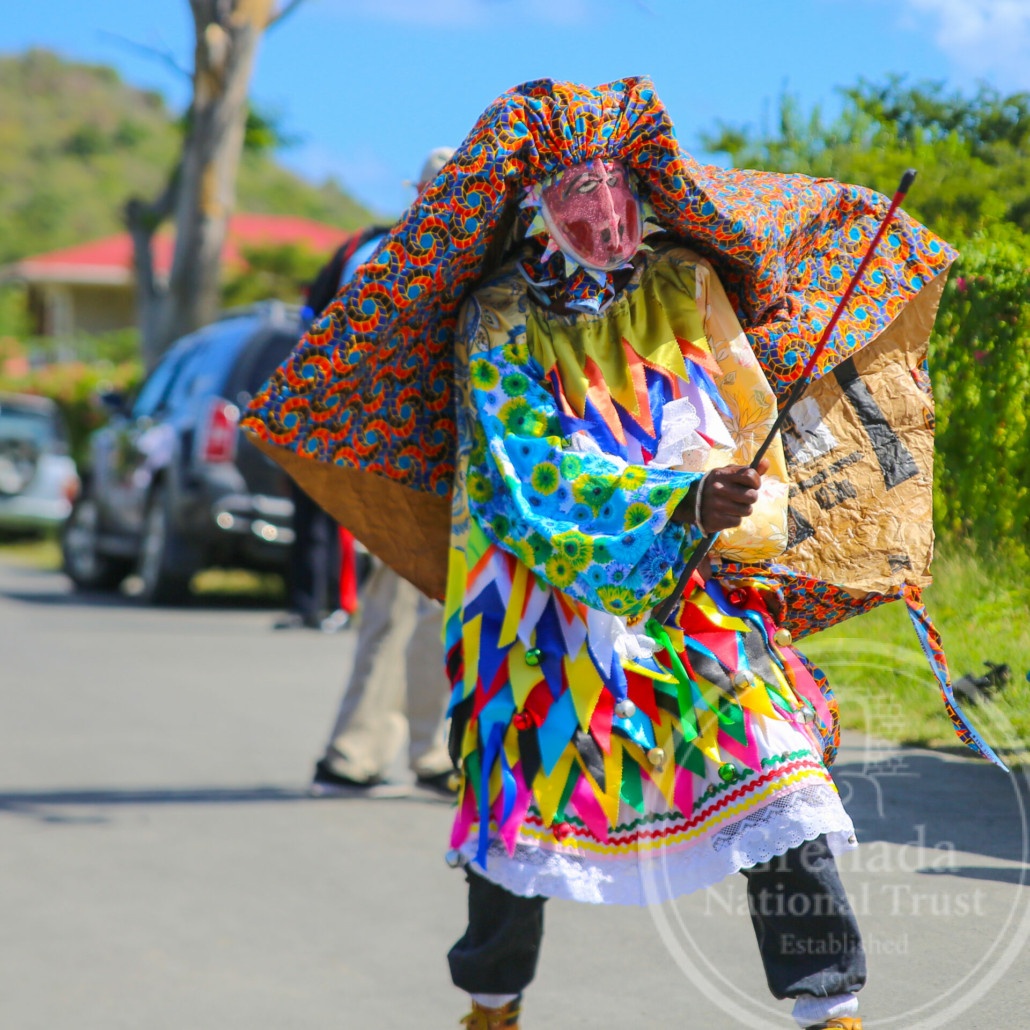Photo credit: by John James, 2022
A traditional wedding in Carriacou & Petite Martinique consists of dancing of the flags and cakes in a tradition known as the “Meeting up of the Cake”. This cultural performance handed down from the ancestors takes place before a wedding. It is a tradition which spread from Windward in Carriacou to the sister isle of Petite Martinique and to the Grenadine islands.
The bride’s family and that of the groom will decide on a neutral place where both sides will meet, accompanied by a string band, a flag, and a cake dancer to clash; usually, it is at a crossroads where a libation of rum and water will be made to the ancestors. The dancing of the flags is carried out before the display of the cakes. The flag dancers are mainly men, and the cake dancers are women. The flags and cakes of the groom must always be danced before that of the bride. Everyone dances to traditional, folk wedding songs.

People in Carriacou dancing
Photo credit: by John James, 2022
Lucy Deroche, 90, local historian, Ella Patrice, 82, cake dancer, Clint John, 47, flag dancer, Randolph H. Fleary, 67, string band musician, Neal Matheson, 48, string band musician, Gloria Roberts, cake dancer, Fedelin Bethel, 89, cake baker, and Dwight Logan, 51, local historian, are some of the well-known practitioners and culture bearers.
There are no specific costumes associated with this dance but many practitioners prefer to wear an African-like top or outfit.
Some of the threats posed to this tradition include Western influence via the advent of television and cell phones and the perceived attractiveness of foreign cultures over local traditions. In addition, the true meaning and history of the tradition is not taught in schools so all of these factors have resulted in waning interest in the dancing of the Flags and Cake. The cost is also a factor as a small private wedding can be cheaper than a traditional one. Another factor is that people are not getting married as much anymore.
One way to safeguard the tradition is to incorporate it in schools. Another suggestion made was that a Heritage Village could be built on Carriacou to showcase the flag and cake dancing as well as other traditions. Different villages in the tri-island state could also be invited to see performances and could perhaps take part in a Flag and Cake Dancing village competition. Public places like playing fields could be used teach the children about the island’s cultural traditions. Practitioners acknowledged that finding donors to support such programmes would be key to their success.
Special thanks to Gloria Roberts, Lucy Deroche, Fedeline Bethel, Dwight Logan, Niel Matherson, Ella Patrice, Clint John, Tyrone Bethel, Randolph Harrison Fleary, who were able to share with us this valuable and unique ritual.

Randolph Harrison Fleary/ICH Practitioner
Photo Credit: Proud of my Heritage - ICH-Zone/Team No.4



